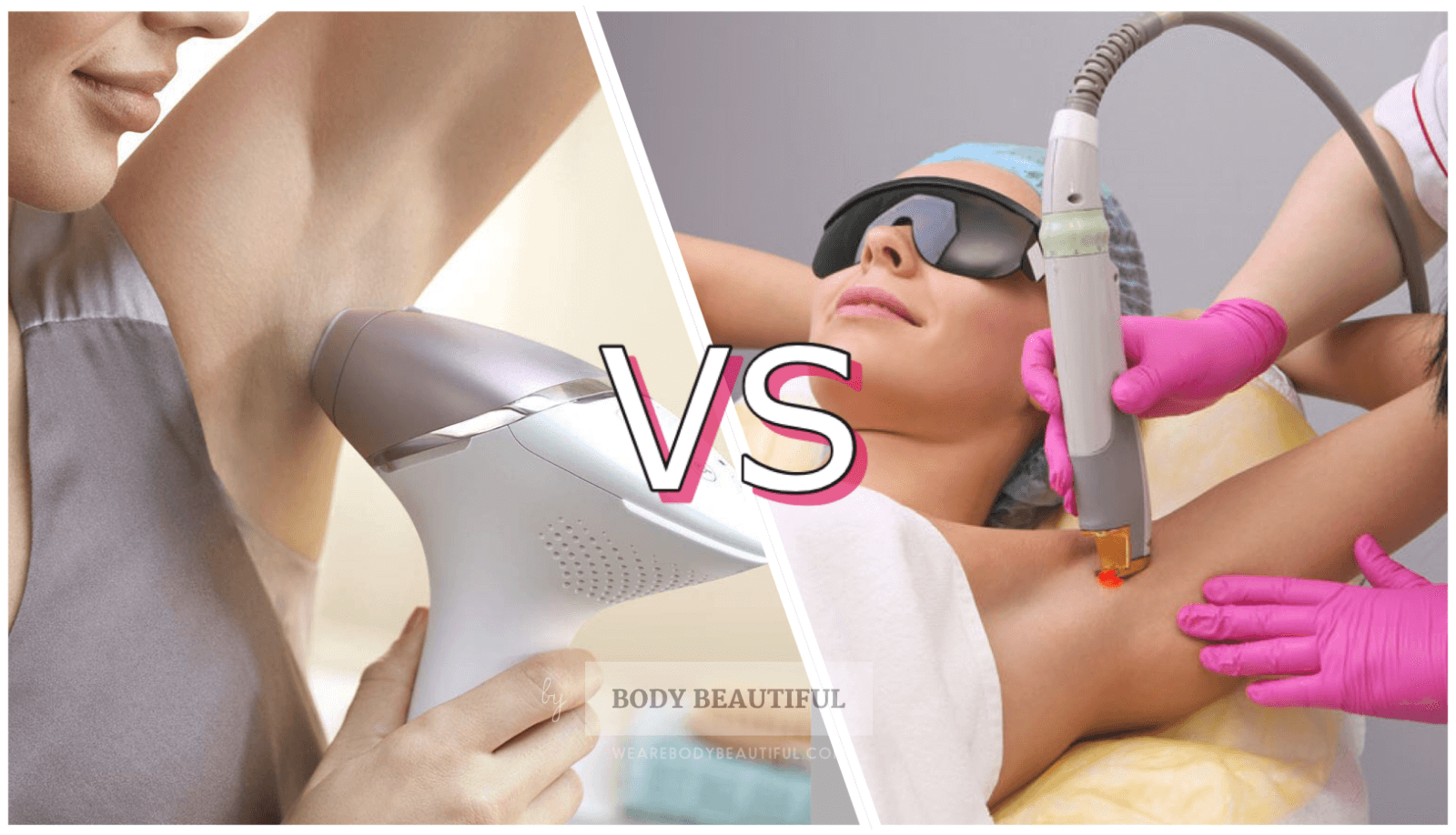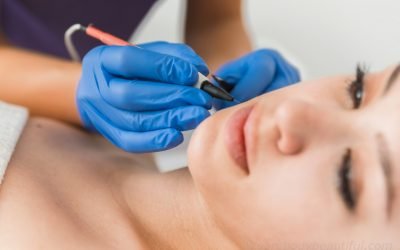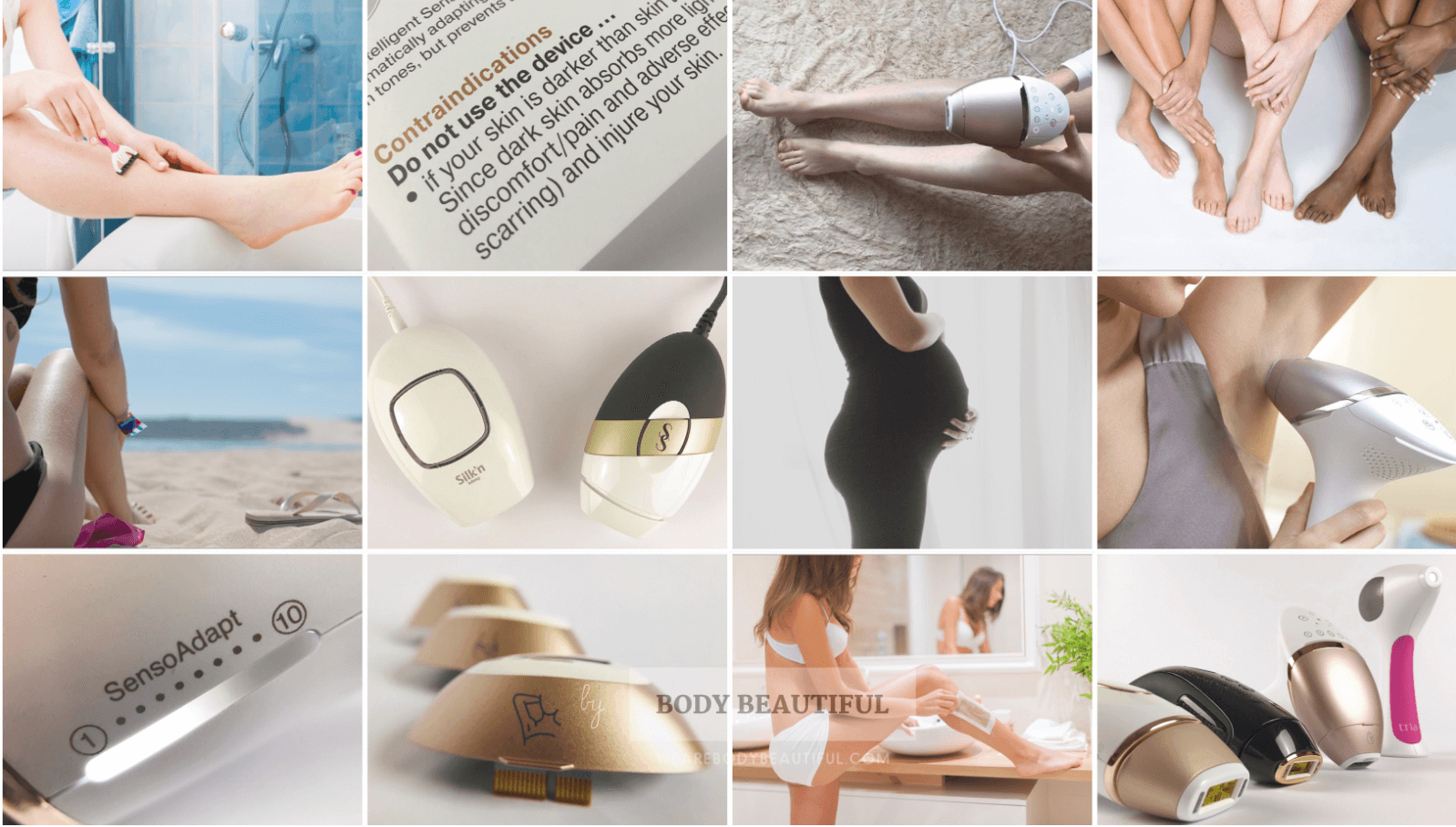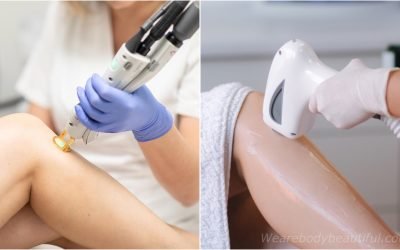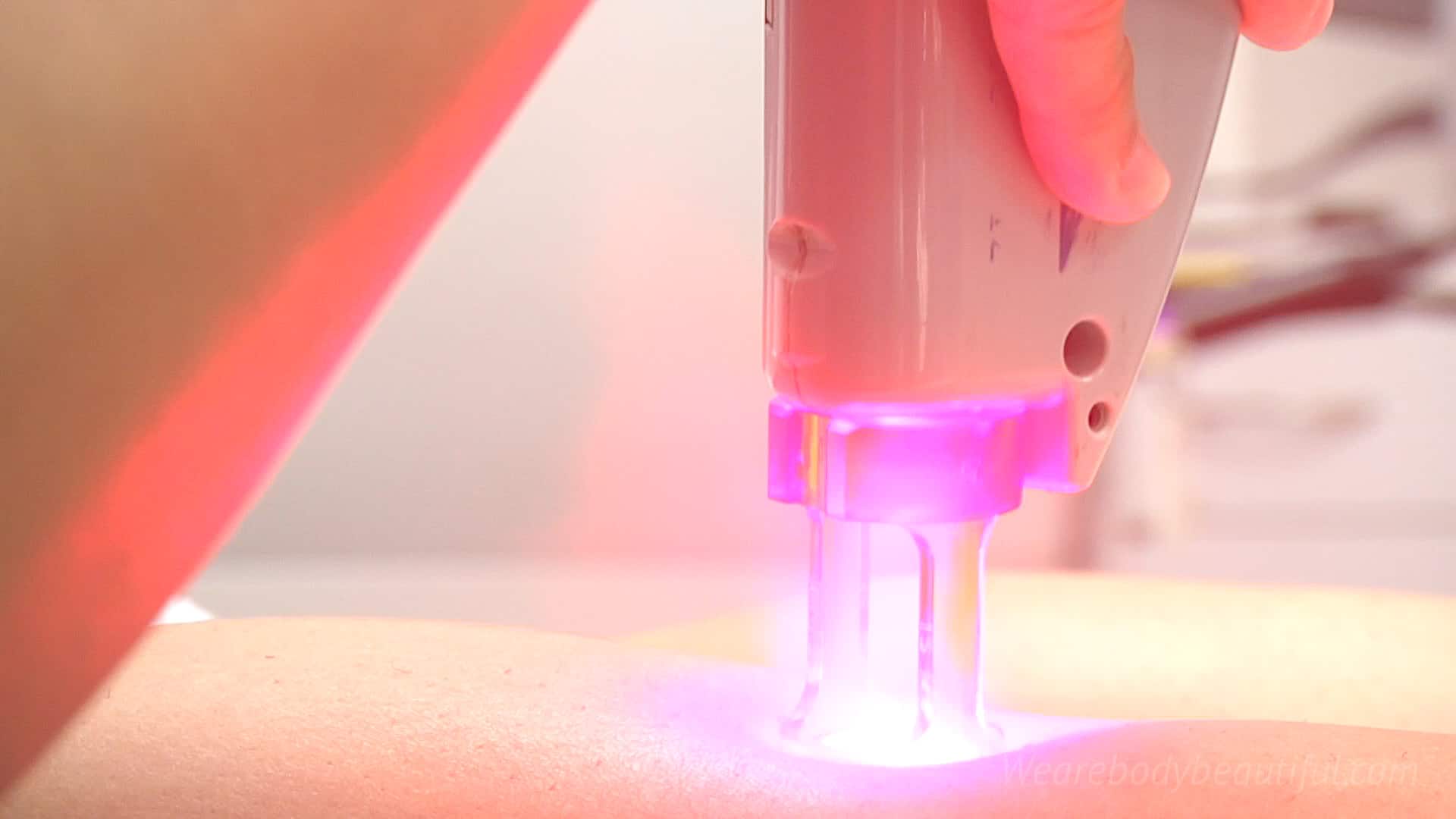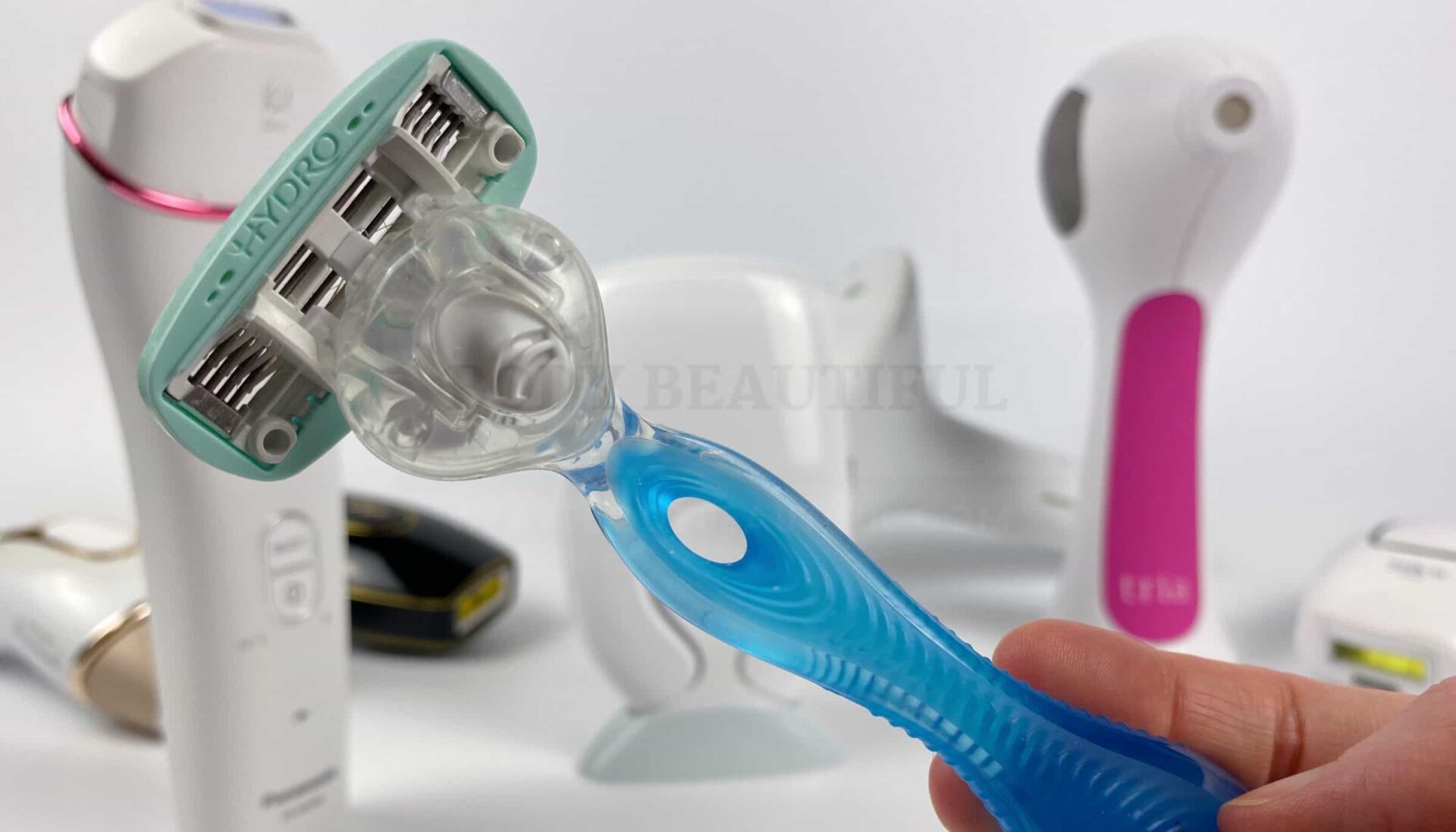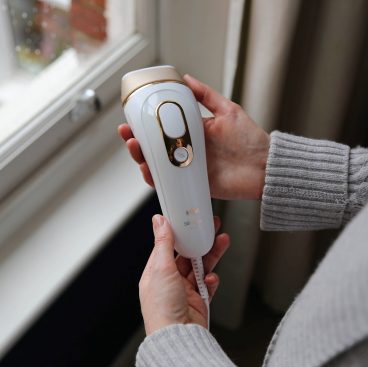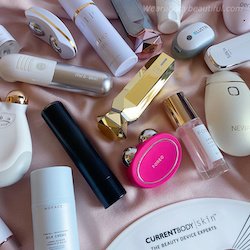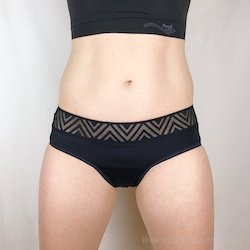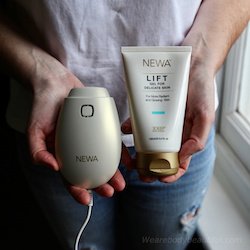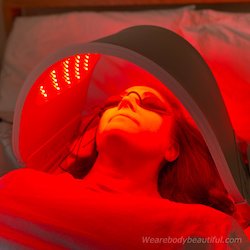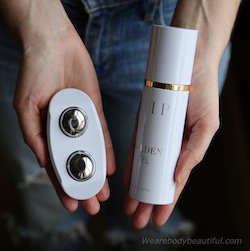I remember the chore of daily shaving. Then, just a few hours later, my cactus legs and sandpaper pits. I spent hundreds on salon waxing just to see pesky dark hairs sprout within a week. And those dreaded, inevitable, angry ingrown hairs. Ugh.

Something had to change. So, after saving my pennies, I took the plunge and had my legs professionally lasered. It was life-changing. After that, I researched and bought a home IPL device and started on the rest of my fuzz. I’ve now tested all the leading home devices. So, I know the pros and cons of both.
This article uses my first-hand experience to explain the differences and similarities, and to weigh the good and bad. It’s up to you to decide so read on for the balanced facts to help you choose.
Let’s start with a quick summary of each to see how they’re different.
Differences of at home vs professional laser hair removal
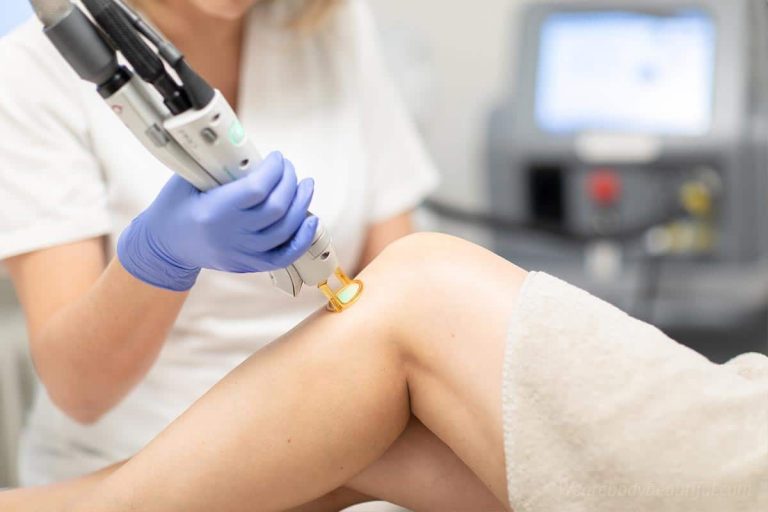
With professional treatments at a leading doctor-led clinic, you’ll get:
✔️ the latest laser technology
✔️ the most powerful light energy
✔️ advanced configurations for all skin colours and various hair colour combinations
✔️ a trained, skilled operative working under medical guidance
✔️ and, most body areas are treatable including men’s beards
✔️ You wear safety glasses
✔️ A treatment course of 6 to 8 sessions, every 6 weeks
✔️ most see significant results after 3 sessions
✔️ Infrequent top-ups, (probably yearly)
✔️ the highest possible, longest-lasting hair reduction, achieved in the shortest time
A course of professional treatments (typically 6 to 8 sessions every 4 to 6 weeks) is more expensive than a home-use device too. How much depends on where you live, the size of your treatment areas and if you want IPL or laser. Laser is most expensive and, considered by those that offer it, superior to IPL. However, there’s no conclusive clinical evidence supporting this.
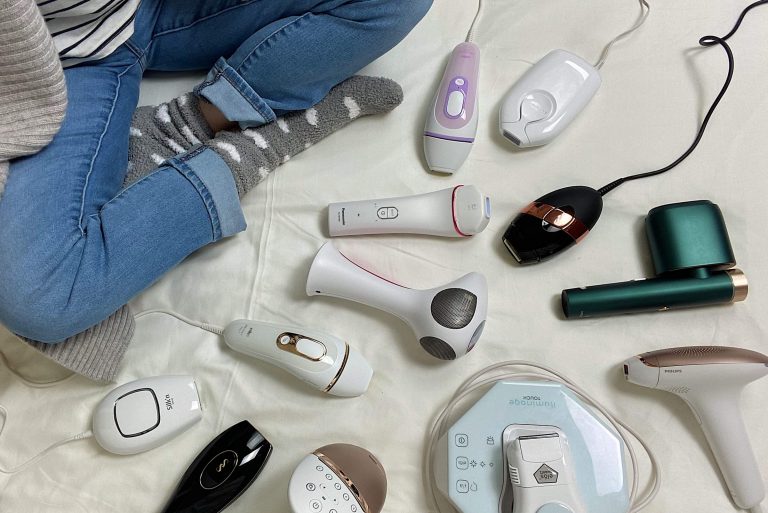
At home, you’ll get:
✔️ A scaled-down, small, hand-held device
✔️ A fraction of the light power than in professional machinery
✔️ With simple controls and safety switches
✔️ Basic or advanced skin tone sensors to keep you safe
✔️ No need for safety glasses
✔️ You can zap yourself
✔️ or enlist a helpful assistant for your back and other hard to reach areas
✔️ A start-up schedule to follow (4 to 12 sessions either every 1 or 2 weeks)
✔️ You also need regular top-ups
✔️ Most see significant results after 4+ sessions
✔️ High and long-lasting hair reduction results after around 1 year of top-up session
Home-use devices are a much more affordable option, ranging from around £100 and up to £500. Also, you can continue to use them on any new hair follicles that grow, months or years down the line. A home device is always on hand to zap those new hairs.
Different power, different effect
Both IPL and laser hair removal use sorts of powerful light energy to remove hair. The light travels through your skin where the dark melanin pigment in your hair absorbs the energy. It converts to heat and damages specific areas in your hair follicle (the bit below the skin). The hair then shuts down and enters a resting phase.
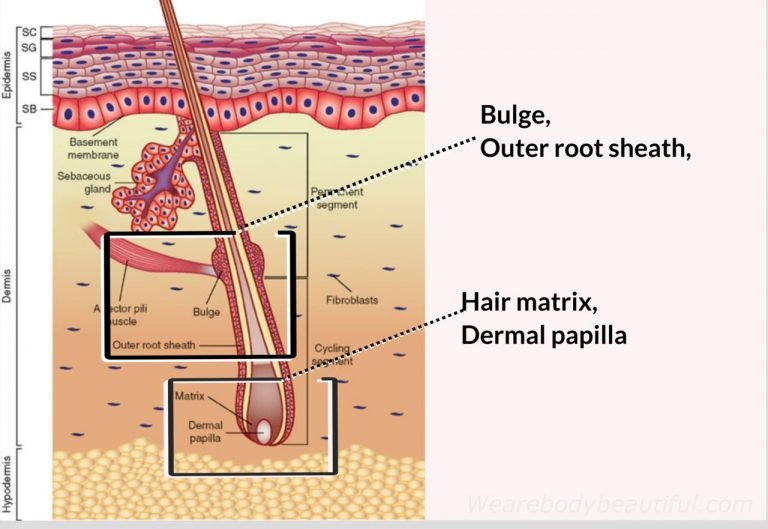
However, there’s also a considerable difference with the intensity of the light energy with professional verses at-home machines. And this means the effect on your hairs is slightly different.
Professional power ⚡️⚡️⚡️⚡️
- A professional laser or IPL machine outputs light energy around 40 J/cm2
- It damages the key areas of active follicles in just one session. So, hairs stop growing quickly, and for a long time.
- You need a course of 6 to 8 sessions to catch your hairs in the active growing state.
- You may need yearly top-ups to stay hair-free.
At-home power ⚡️
- At-home IPLs output light energy around 6 J/cm2 and at-home laser output is 20 J/cm2
- During the start-up phase, they quickly cause temporary hair removal. i.e. hair falls out, but can start a new growth cycle soon.
- However, with several top-ups, damage builds in the key follicle areas. This eventually breaks the hair growth cycle for long lasting smooth results.
- You need more than double the number of professional sessions to get similar results.
- AND the top-ups are super important.
Therefore, the way they do it and how long they take is very different. You’ll need many more sessions with at-home laser hair removal but the end result of both is about the same: hair-free, silky smooth skin that can last months.
Related: how laser hair removal works in even more detail
TIP: Professionals often dismiss home-use devices saying they’re so much weaker and therefore won’t work as well as professional treatments. However, you can still get very good results with a home-use device.
Next, let’s compare the treatment schedules and typical results you’ll get.
Schedules & results compared
You must follow a treatment schedule over the course of several months with both professional and at-home laser hair removal. This is to zap all your hairs in the active growing stage (Anagen). You’ll need many more sessions with an at-home device, but you can achieve similar results.
Both professional and at-home devices measure their results in terms of permanent hair reduction. This is the hair reduction count at 6, 9 and 12 months following a full treatment cycle.
Let’s learn more about this now.
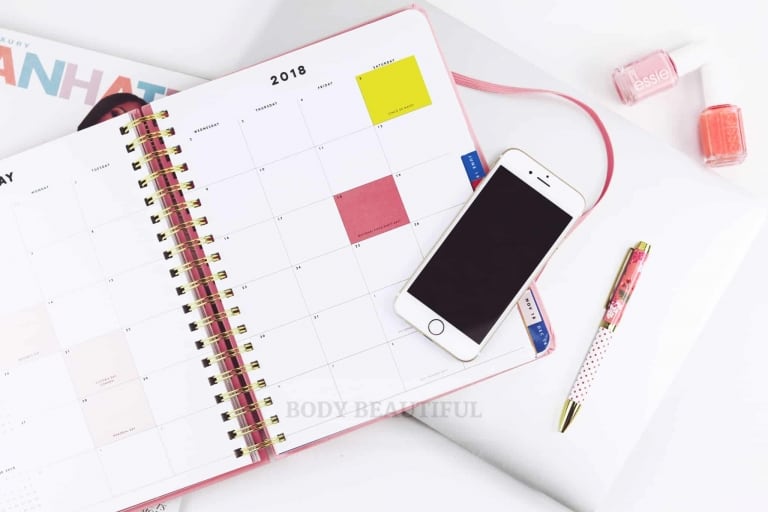
Professional schedule
- A course of 6 to 8 sessions spaced at roughly 6-week intervals.
- You’ll see a 10 to 25% reduction in hair growth after each session (source: American Academy of Dermatology)
- It takes a few sessions (a month or 2) to see significant results.
- And up to 9 months to complete your course.
- You can achieve up to 90% permanent hair reduction on all skin types (Sk:n Clinics)
- Results are long-lasting, by months or even several years. However, you may need touch-up treatments every year or so to maintain your results.
At-home schedule
- The start-up phases for home devices vary between 4 to 12 sessions. Some you do weekly and others every 2 weeks.
- Continue with these regular sessions until your skin is smooth.
- Most people see significant results after 4 to 6 sessions (or after a month or 2)
- Then you do less regular top-up sessions to stay smooth, every 1 or 2 months
- Home brands have clinical data proving permanent hair reduction. More on this below…
- A recent study shows stopping early at 4 sessions means all your hair eventually grows back.
- You must continue with top-ups every 4 to 6 weeks for 1 year to get high and long-lasting hair reduction that lasts several months at a time.
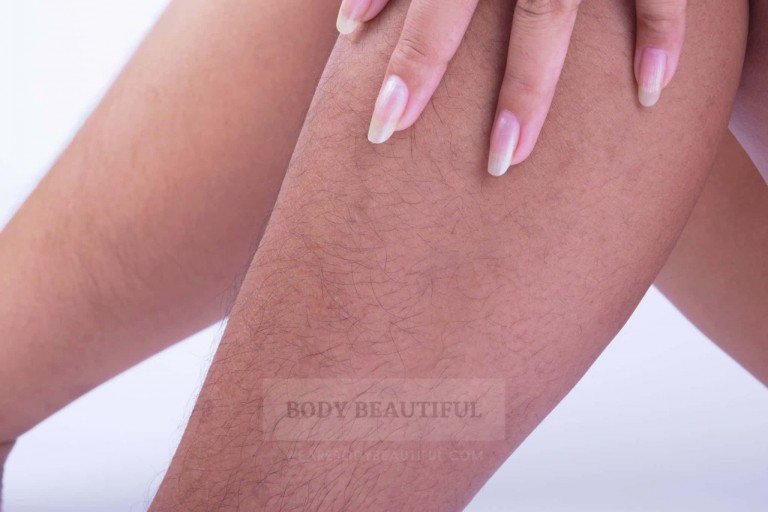
The leading at-home devices have clinical test data to show they work, and they also meet the FDA definition of permanent hair reduction. The hair reduction percentages range from around 40% to 65% stable hair reduction 12 months after the last treatment. This is lower than professional results.
However…
Earlier in this article we learned top-up sessions are super important. It’s these that build damage to the cells responsible for new hair growth. So, after several top-ups you get a higher and longer-lasting hair reduction. Now, the test data for at-home devices excludes these top-ups. Therefore, realistically you can achieve a much better hair reduction then the clinical data suggests.
This is not a quick and easy thing to explain, so most brands don’t bother. However, there is one study which demonstrates the long-term, cumulative effect of top-ups. Keep reading to the next section to learn more.
IMPORTANT: Although at-home device brands DO advise you need top-up treatments to stay continuously smooth they, unfortunately don’t emphasize just how crucial they are. It’s important to understand this ongoing commitment so you have realistic expectations.
Professional vs at home results comparison
Here’s a comparison table of the treatment schedules and typical results for both professional and home laser/IPL hair removal. The data for at-home results is taken from this 2019 study on 90 women with skin types I to III over 2 years, using the Philips Lumea at 6.5 J/cm2.
| Compare | Professional | At-home |
|---|---|---|
| Schedule: | 6 to 8 sessions every 6 weeks | 4 to 12 weekly sessions or 4 to 5 sessions every 2 weeks, then 8 to 11 monthly top-ups |
| Total sessions: | 6 to 8 | 15 to 20 |
| Significant results after: | 2 or 3 sessions 1 to 2 months |
3 to 6 sessions 1 to 2 months |
| Total duration: | 8 to 9 months | 12 months |
| % hair reduction 1 year later: | Up to 90% | 50 to 80%* |
This means:
- Both give fast smooth results. With a typical and good response, both take around the same elapsed time (1 to 2 months). However, in that time you need a few more at-home sessions.
- Professional treatments take up to 9 months to complete and give up to 90% hair reduction.
- Regularly commit to your at-home device for around a year of top-ups for long-lasting fuzz-free smoothness.
- Professional sessions give the highest possible, longest-lasting hair reduction, achieved in the shortest time.
Related: compare each home brand’s treatment schedule & user results here
It’s important to note that results for both professional and at-home laser and IPL hair removal vary by person too. Let’s check why that is.
Things that affect your results
First up, it’s important to understand neither professional nor at home treatments promise 100% hair reduction or high hair reduction forever. That’s because some of your dormant hair follicles can activate months, or even years, after your treatments. This is determined by genetics and influenced by hormones.
Therefore, when new hairs appear you’ll need top-ups.
Professionals suggest yearly top-ups but you may go longer than that. It’s important to consider the cost of top-up sessions too. With your home device, it’s very little effort (and no additional cost) to re-zap the occasional new hair and patches of regrowth. So, they’re a smart investment.
Also, you can have a higher or lower hair reduction than is typical (as above). And your results could last less time than others.
Things which can affect your results are:
- Your skin and hair colour combination. Light skin and dark hair are best.
- Hair thickness
- Your genetics
- Your hormones, and conditions like hirsutism (excessive hair growth) and PCOS. Hair can be more persistent and new follicles activate regularly
- The machine configuration (or skill of the operaive) for your treatments
Which is easiest?
In this section I’ll cmpare the effort, convenience and comfort of both options. Here’s a quick summary of the key points then a bit more detail to follow…
Professional effort and ease
- You must organise, schedule and show-up to 6 to 8 sessions at your clinic over 9 months.
- You must thoroughly shave a day or two before your session
- The laser or IPL technician does all the hard work!
- You’ll be in your under wear for most body areas
- They are thorough and get up-close!
- Sessions are quick – around 1 hour for legs and smaller areas combined.
- You get post treatment advice and support as you need it
At-home effort and ease
- You must stick to the regular start-up sessions, and then monthly top-ups
- Shave immediately before you zap
- A friendly assistant is helpful for any hard to reach areas
- You can do it all in the comfort of your own home
- It takes about 1 hour to zap your full body, but you need privacy, patience and concentration
- You must follow the aftercare guidance in the user manual
Professional effort, comfort & convenience
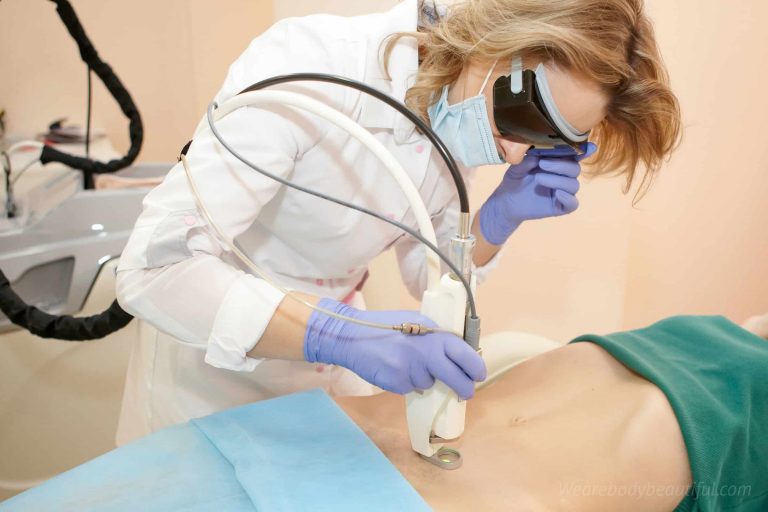
If you choose professional laser or IPL hair removal, you must obviously attend regular appointments at a clinic. This includes travel time and parking. For some this appointment roughly every 6 weeks is easy to schedule, organise and commit to. For others, work and family life is unpredictable and gets in the way. So, it depends on your own circumstances if it’s easy or not.
Once you’re there, aside from pre-shaving and being on time, there’s not much effort from you during your treatments. It’s easy. You’ll undress, put on safety glasses and recline on the treatment bed. You’ll need to move limbs as directed during the procedure, but there’s no uncomfortable bending or twisting. The operative zaps around your body doing all the hard work, not missing a spot.
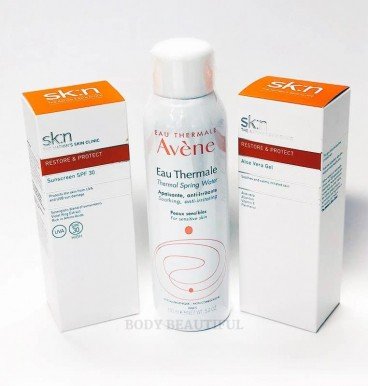
However, for legs and bikini you’ll be down to your underwear with a stranger up-close and personal. This may make you feel uncomfortable and put you off. However, if you’re used to professional waxing it’s not that much different. And it’s over very quickly anyway. The machinery and operative are fast to cover large areas.
Going to a reputable doctor-led clinic also gives you the reassurance of specialist knowledge and support. You’ll get an aftercare pack to help with minor skin irritation and post-treatment skin protection. Side effects are very rare, but the clinic is ready to help.
At-home effort, comfort & convenience
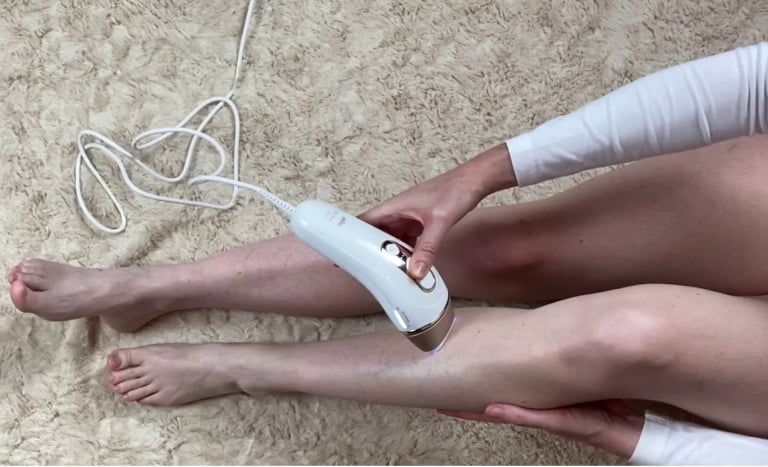
You can use your at-home machine whenever convenient. But you must still commit to the treatment schedule to get your best results. This means staying motivated and making the time. It helps to do it the same day or an evening each week. Or even one body area per day. Find a routine you can manage and stick to.
Related: how to prepare and what home treatments feel like
Shave before every session, and you’ll need to zap your areas yourself. This means some bending and twisting and awkward positions around your butt, bikini line and backs of legs. Or you could enlist a helpful assistant. It’s much easier, and essential, if you’re treating your back. Underwear is optional.
There’s much more upfront commitment with home machines. You’ll need to zap yourself weekly or every 2 weeks until you’re smooth. Whereas professional sessions spread the time and effort over the course of several months.
However, recent home machines are much faster than earlier models. Those took about 20 mins per full leg. Yikes. Today you can now zap your full body in under 1 hour, and closer to 30 minutes. It still takes patience and concentration. But it’s way more manageable, less tedious and without strain or aches.
Next, let’s compare safety.
Safety for dark skin tones
Not all IPL and laser hair removal machines are safe for darker skin tones. This is down to the science behind it.
Inappropriate machinery or light configuration can cause pain and damage on dark skin There’s a very high risk of temporary or permanent skin darkening or lightening, strong redness, burns and blisters.

However, you’ve still got options with both professional and at-home machines.
Professional dark skin safety
- Specially configured Diode laser or the Nd:Yag laser are both clinically-proven safe for dark skin tones
- Some IPL machines combine with Radio Frequency energy resulting in gentler IPL
- Find a reputable clinic who provide a thorough consultation and offer up-to-date machinery safe for all tones
At-home dark skin safety
- No at-home lasers are safe for dark skin (types V or VI)
- Some at-home IPLs have advanced filters which cut-out wavelengths harmful to dark skin (to type V)
- A few brands combine IPL with Radio frequency or Galvanic current and are safe on the darkest skin tones. Learn more here…
- Choose a device from a reputable and clinically tested brand
Related: which at-home devices are safe for darker and black skin
Safety standards and regulation
Here’s a quick comparison of the standards and regulation in place to protect us. Then there’s a little more detail below.
Professional standards
- Decades of research show the technology is safe
- Evolved technology
- Machinery meets international, medical device manufacturing, safety and regulatory standards
- Manufacturer clinical tests & data
- Manufacturer FDA clearance
- You entrust your safety to your chosen clinic
- Choose a doctor-led clinic 👈
- Doctor-led training & patient assessments
- You get a suitability consultation with a skin sensitivity test
- You wear eye safety glasses
- You get medical post-treatment support if you need it
- But treatments are not regulated in the US and UK
At-home standards
- The first safety guidelines were issued in 2012 by the European Society for Laser Dermatology
- Now we have international manufacturing standards and test requirements from the International Electrotechnical Commission (IEC)
- European sold brands need CE certification
- US sold brands need FDA clearance
- The leading brands are clinically proven
- You must choose a device safe for your skin tone
- You must read and follow the safety guidelines in the user manual
- And do your own skin sensitivity test, usually 24 hours before your first session
- No need for eye safety glasses
Professional laser hair removal safety standards
This covers two areas; first the technology and machinery, and second the clinic or practitioner services.
There’s plenty of evidence showing that professional laser and IPL technology is safe and effective. And machinery manufacturers must meet international safety standards and have medical-device certification for laser devices. And the technology has evolved too.
Today it’s safer. The first approach of longer, high-power light pulses has evolved to shorter successive pulses of lower intensity. This means it’s gentler on the epidermis, but still destroys the hair follicle below. Therefore, treatments are more comfortable with less risk of reactions and side effects. But without compromise on results.
Leading aesthetics clinics use the latest machinery. Doctors lead the team of nurses and practitioners with expert support and knowledge. And in-clinic, they follow medical protocols to keep you safe. There’s also a particular focus on training and doctor-led patient assessments.
A reputable clinic always starts with an initial consultation. It’s the first safety step. It’s where the consultant assesses your suitability and medical history. They’ll find any reasons you may not be suitable for laser hair removal. Or confirm it’s safe to go ahead.

They’ll then do a safety patch test on your skin. This checks your sensitivity. If you feel intense heat and discomfort, they can apply a numbing agent to your skin. But it’s not necessary in most cases.
They also walk-through how to prepare, possible reactions and side effects, and after care with you too, including important sun exposure guidelines. And during your treatments, both yourself and the operator wear safety glasses to protect your eyes from the powerful laser / IPL light.
However, in the UK and some US states, the industry isn’t regulated. This means anyone can provide treatments. Therefore, beware of inexperienced or untrained providers. Their lack of knowledge, possible inappropriate technology and training can result in skin damaging treatments, or very poor results.
From my own personal experience, I recommend Sk:n clinics in the UK. They’re professional and have top safety standards.
At-home laser hair removal safety standards
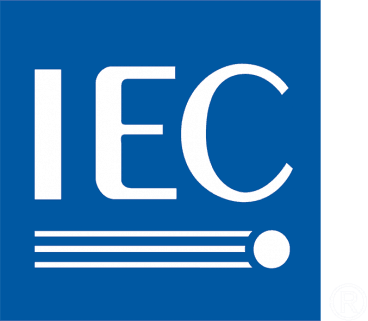
For at-home devices, manufacturing and design is super important, as is the responsibility of the user to follow the safety guidelines.
Although there are several clinical studies from at-home device manufacturers, many medical professionals call for further and more robust research into the long term effects of at-home devices.
Today we have clear international manufacturing and safety guidelines for at-home laser and IPL machines. The latest in 2016 specifically addresses “Particular requirements for cosmetic and beauty care appliances incorporating lasers and intense light sources” (IEC 60335-2-113). Brands meeting these standards ensure your safety. Several trusted house-hold and specialist brands offer home IPL and laser hair removal devices. Many of these brands are members of the ‘Home Use Device (HUD) Working Group’.
The HUD Working Group focuses on:
“Safety, Efficacy, Measuring and Standards [of] home use, light- and energy-based aesthetic devices’.”
HUD Working Group
Manufacturers include Alliance Boots, Home Skinovations (Silk’n), Philips, Braun (P&G), Cyden Ltd (Smoothskin), Babyliss Sarl and CurrentBody.com Ltd. You get extra reassurance from FDA-cleared devices too. This is necessary for devices if sold in the US only.
Here’s a list of all FDA cleared at-home IPL and laser devices.
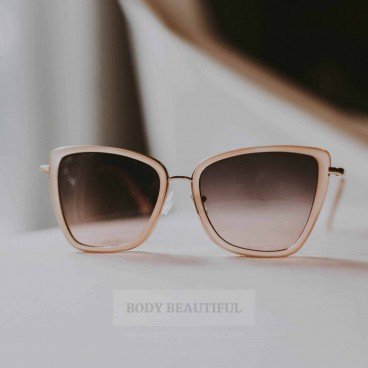
Home devices also share several in-built safety features to protect your skin and eyes.
✔️ All devices reviewed on this site have UV filters to protect your skin.
✔️ And (almost) all have contact sensors or mechanisms to flash only when covered by your skin too so you don’t need safety glasses
There’s no visible light from laser, but IPL flashes can irritate. Try wearing regular sunglasses to ease it a bit.
It’s important to choose a clinically-proven safe device for your skin tone. And, with a home-use device, it’s your responsibility to check this and to read the user manual carefully. You’ll find lots of safety information, contraindications and warnings too. These can seem scary. But this is how the manufacturers provide clear warning to protect you. Read them and see if any apply.
And you must do your own skin patch test to check your sensitivity and find the right intensity level. The user manuals guide you through this too.
IMPORTANT: Contraindications are roughly the same for both professional and at-home devices because the light technology is the same.
Common contraindications include extreme tan, pregnancy or breast feeding, recent waxing of epilation, some tattoos and permanent make-up, active or chronic herpes simplex virus, keloid or hypertrophic scarring, certain medical conditions, and medications making you more sensitive to light. Learn more about general home device contraindications here.
Possible side effects
The possible side effects with both at-home and professional laser hair removal are the same.
Whilst some minor and temporary skin redness and itchiness is common, side effects are very rare. They tend to occur if the laser or IPL configuration is too powerful for your skin. Such side effects include burns, blisters, infection, and temporary or permanent skin darkening and lightning especially on darker skin tones.
When performed by a trained and skilled operative under medical direction the risk of side effects is very small. They’ll assess you and configure the machinery safely for your skin and hair colour. Your test patch confirms the settings are safe.
The risk of side effcts with a home-use device is greater if you choose too high a power level. To counter this, most at-home devices have a basic skin tone sensor that won’t flash if your skin is too dark.
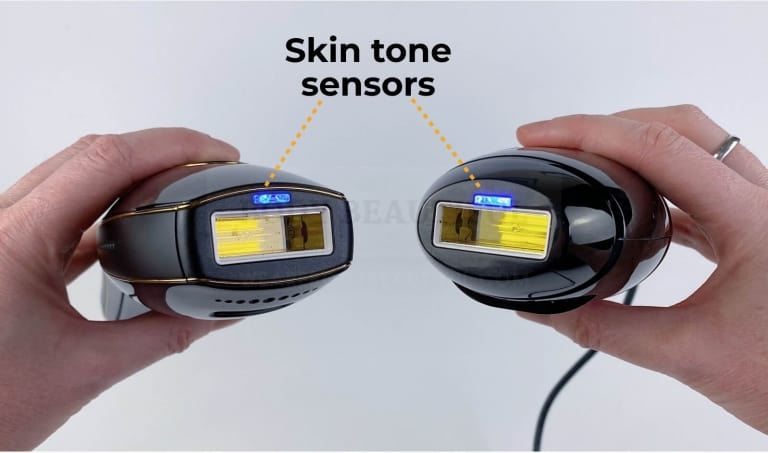
However, if you want a little more reassurance, you can choose safer low intensity models (see the Silk’n Infinity). Or super-safe devices with advanced skin tone sensors (such as the Smoothskin Pure and Braun Pro 5 IPL). They significantly reduce the risk of skin damage because, before every flash, they choose the best intensity level for your skin.
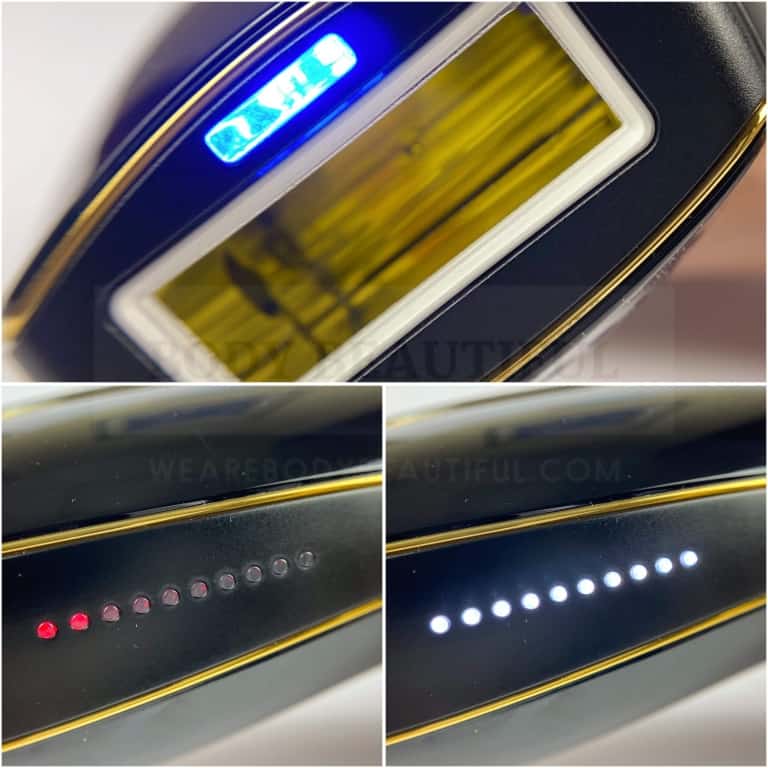
However, regardless of the intensity you use, you increase the risk of side effects if you don’t follow the strict guidelines on sun exposure.
Safety and sun exposure
Here’s a quick summary of the very important sun exposure guidelines for both types of treatment.
Professional sun exposure guide
- Avoid sun exposure during your treatment scheule (around 9 months)
- It’s best to start sessions during Autumn & Winter
- Don’t self tan using creams either!
- If you do you’ll need to either pause your sessions until your tone returns to normal
- Or reconfigure the light energy to match (more possible cost and time!)
- It’s likely to negatively affect your results
At-home sun exposure guide
- Avoid sun exposure before and after your sessions
- The brand guidance ranges from weeks to days
- It’s safest to avoid sun exposure altogther during your start-up sessions
- Always do another patch test after recent sun exposure
Both professional and at-home machines warn against prolonged sun exposure and tanning during your treatments. That’s because the combination with IPL / laser energy makes your skin extra sensitive. It increases your risk of side effects.
You must avoid sun exposure and follow the guidance from your professional practitioner for the duration of your treatment course. You also MUST NOT tan artificially with creams because this darkens your skin tone. This then requires a new IPL / laser configuration, or a pause in your treatments, and annoyed laser practitioner. They often provide helpful SPF sun protection creams to keep you safe.
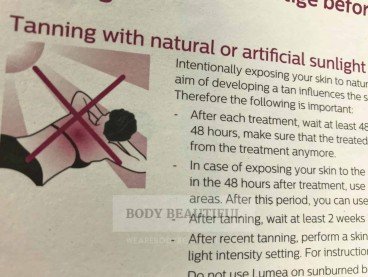
Follow the guidelines around sun exposure and artificial tanning in your at-home device user manual. The rest period before and after exposure / treatments ranges by manufacturer from a few days to a few weeks. There’s more here. You’ve more flexibility once you’ve completed your start-up phase because you can better manage sun expoure around top-ups every month or so.
IMPORTANT: If you can’t avoid sun exposure or you enjoy building a tan more, both professional and at-home laser/IPL is not for you.
All my reviews on this site explain the brand’s guidance around sun exposure and tanning.
What do they feel like?
Both professional and home-use devices should never hurt, but you will find online reviews from people who endure it through gritted-teeth. And the zaps can smart a bit at times. This is especially true in more sensitive areas such as underarms and bikini line. This is where hair is denser and thicker and the increased heat can cause discomfort. For some reason the very tops of my legs sting most, so you may have your own particular tender spots too!
Here’s a quick summary of the possible sensation with professional and at-home hair removal:
Professional sensation
- It’s a hot zingy sensation for most people
- But it can hurt more for some depending on your sensitivity
- Decide if it’s tolerable during your skin patch test
- The practitioner configures the machinery for effect and comfort
- They may apply a cooling gel
- The room is cooled for comfort
- Machines have contact cooling technology to soften the sensation of each zap
- You’ll smell burning hair, it’s worse during the earlier sessions
- If you’re very sensitive your clinic can give you topical pain killers to apply about an hour before your session
- Cooling packs and sprays, and Aloe Vera also help soothe hot skin after your session
At-home sensation
- Very few reports of pain with at home IPL devices when using the correct intensity
- There are more reports of considerable discomfort with the Tria 4X at-home laser (because it’s more powerful)
- Many users use lidocaine gel or the Tria calming gel
- It can burn if you’ve not shaved all your hair
- Turn down the intensity a notch, or select a gentle mode, if it’s a bit zingy!
- You may smell singed hair
Related: more about the sensation with the Tria 4X laser
Cost comparison
Professional treatments are most expensive. and laser is typically more expensive than IPL because it’s offered by aesthetic clinics who employ medical staff. And laser machinery is more expensive than IPL too. In contrast, an at-home device costs around the same as a course of treatments for a small body area. And you can treat as many body areas as you like, and do top-ups as frequently as you need. You could also start off with professional sessions, and then choose an at-home machine to manage your top-ups.
Professional cost
- 6-session large area laser course in South England costs £1,408*
- 6-session large area IPL course in South England costs £400*
- Professional treatments cost less than 10 years ago because there’s more competition from other clinics.
- Plus, many choose between at-home devices too.
- Clinics offer percentage deals off packages
- and deals are also available on sites like Groupon
- You’ll need to pay for any future top-up sessions too
- Or you can buy a home-use device for all the future zapping you need!
At-home cost
- At-home devices cost between £100 to £500
- The best give unlimited flashes, or many more than you’ll ever need for decades of smooth skin
- The latest zap a whole-body in close to 30 minutes!
- No messy gels to use
- No more cost, just a bit more time for top-ups
*as of 2015. This also depends on where you live and any local or national deals.
For some, professional laser is just too expensive. Professional IPL is more affordable, but make sure you choose a skilled practitioner to get your best and longest lasting results.
Learn more: Laser vs IPL comparison
So, which should you choose?
I hope this has helped you understand the key differences and which appeals the most. It’s a personal choice, but backed up by your bank account!
Here’s a summary:
Results
Professional treatments give you the highest, longest-lasting hair reduction results in fewer sessions.
But home machines still deliver smooth results that you can maintain at home with a little effort.
Effort & convenience
This depends on your perspective and circumstances.
You must keep your appointments at the clinic or salon. They’re spaced apart. Maybe it’s a hassle to attend. Or you may prefer this structure vs finding your motivation at home. However, once there the operative does all the hard work.
At-home you need more sessions overall, but you can do them whenever and in the privacy of your own home. You do need commitment, time,
patience and concentration, and maybe a helpful assistant.
Safety
Side effects are rare if you choose a reputable clinic or practitioner. They must have quality machinery, excellent training and work under
medical direction. You entrust them with your safety and the powerful laser / IPL technology.
Choose a clinically-proven home device from a trusted brand with solid customer support. They’re intuitively designed to keep you safe with
safety features to protect your eyes and darker skin. You’re in charge therefore check the contraindications and safe skin tone range. Always read the
user manual and do a patch test.
Pain / sensation
Everyone’s tolerance and sensation, is different. However, a reputable practitioner ensures you’re in no pain, but a little discomfort is
normal.
Home-devices should never hurt if you use the right intensity for your skin tone. Your test patch is important to check your sensitivity.
Cost
Professional treatments are expensive. The cost for a professional course depends on your location, treatment areas and IPL vs laser. Laser is usually
most expensive. Choosing the right clinic is more important than the cheapest price.
Home machines are much more affordable (but still an investment). You can buy a home device for the same cost as 1 or 2 professional sessions. Plus, there’s no additional cost for your top-ups. You can zap new hairs as they appear.
Professional laser hair removal is for you if:
- You want someone else to do the hard work
- Want your best results in fewer sessions
- Can commit the time to your appointments
- You can afford it
- Can afford top-ups as you need them (or you could buy a home device!)
If you live in the UK, visit the Sk:n Clinics website for pricing and to book a consultation.
Choose an at-home laser hair removal device if:
- You can organise and commit to the regular home sessions
- You need to fit sessions around your busy day
- You don’t mind less frequent top-ups to stay smooth and prolong results
- You have PCOS and need regular sessions to zap stubborn hairs
- You don’t want to bare almost all in front of a stranger
- Need a more affordable option
Learn more about at-home laser & IPL hair removal here or how to choose your perfect device here.
Professional pros & cons
With a knowledgeable and skilled operator from a doctor-led reputable clinic such as sk:n:
Pros ✔️
- Longest-lasting results from a course
- Stringent safety and medical protocols
- Low risk of injury or side-effects
- Consultation with medical professional to check
contraindications - Someone else does all the work
- Most see smooth results after 2 or 3 sessions
- Can treat men’s beard
- All skin types
- Up to 90% hair reduction
- Sessions are quick (around 1 hour)
- Interest free credit available
Cons ❌
- It’s expensive
- Must keep to your scheduled appointments
- Travel to and parking at your clinic
- The operative gets very close to your areas
- Additional cost of top-ups as needed
Home devices pros & cons
Pros ✔️
- Affordable one-off cost (the same as 1 or 2
professional sessions) - Several trusted & expert brands
- Inbuilt safety mechanisms
- Clinically tested safe & effective
- Brands with super-safe skin sensors
- Manageable start-up schedule (5 to 12 sessions)
- Do it at home in your spare time
- Re-zap new growth as it appears
- Most see significant results after 5 or 6
sessions - Several choices for quick full body sessions (30
to 45 mins) - IPL options for dark skin
Cons ❌
- You must check the contraindications carefully
- Higher risk of side effects if you use too high an intensity for your skin tone
- Must commit to start-up and maintenance treatments for long-lasting results
- May need a helpful assistant for hard to reach areas
- Shouldn’t treat men’s beards
Conclusion
I’ve tried both. The results of professional laser hair removal on my legs are still amazing over a decade later. I’ve been using at-home IPL machines for about the same length of time on my other ‘areas’ and I need only the occasional top-up now as new follicles activate. Perhaps twice a year. I’m perfectly happy with the results I enjoy, and the money I save.
If you can afford professional treatments and like the sound of them, then find the right clinic and go for it.
If you can’t afford professional treatments, don’t fret. Home devices are a super and more affordable alternative.
If you can afford professional treatments but still aren’t quite sure, try this. Choose a home device with a money back guarantee. Test it for a few months. If you aren’t happy with it, go see a professional. If you are, you may have saved yourself thousands!
Or, do you want to go professional but are wary of the ongoing top-ups cost? You could buy a home device after your professional course for maintenance at home. Loads of people do this to keep the ongoing cost low. You can buy a home device for the price of one or two professional top-up sessions.

